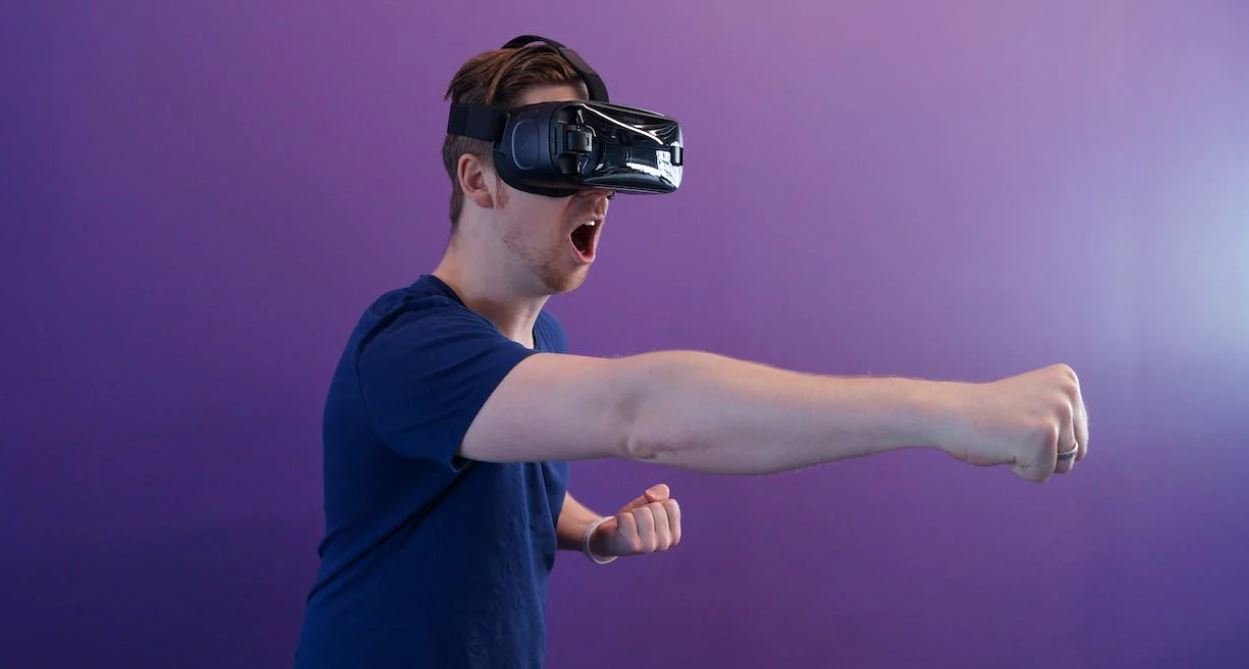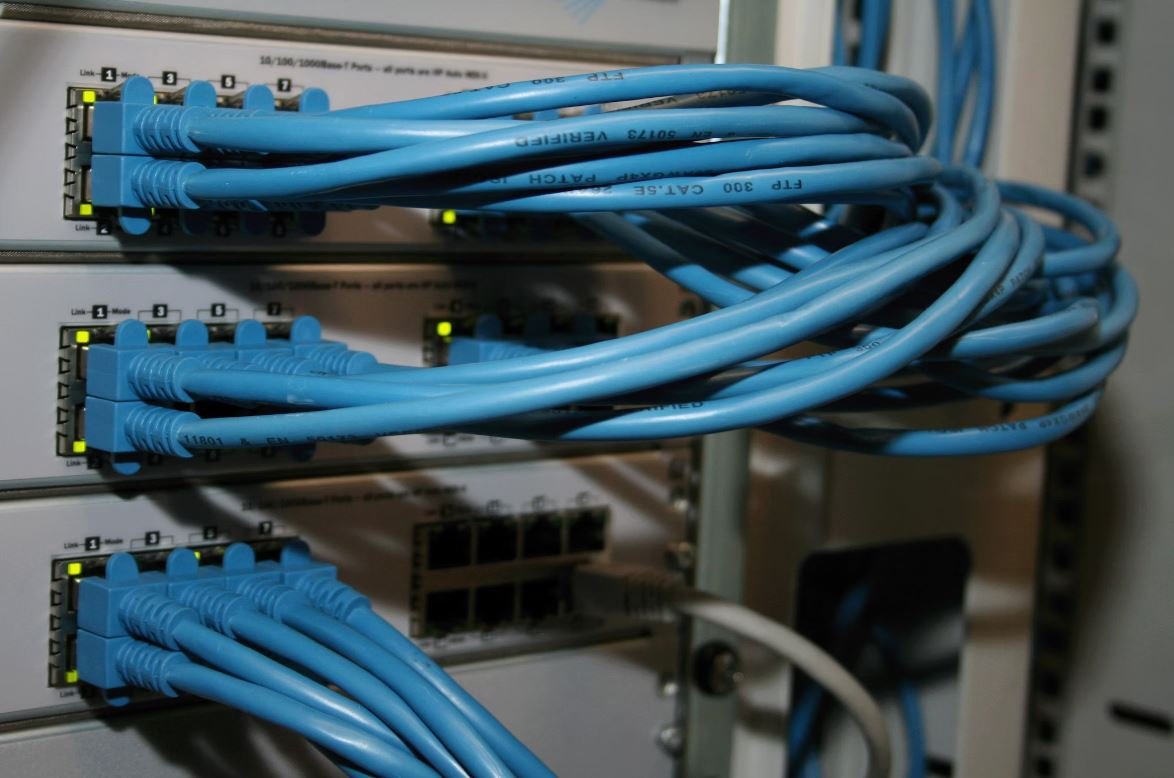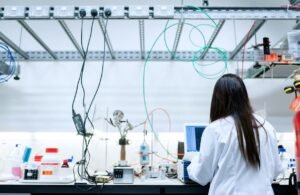AI Virtual Production
In recent years, AI virtual production has emerged as a groundbreaking technology in the entertainment industry. By leveraging artificial intelligence and virtual reality, this innovative approach streamlines the production process and enhances creative possibilities for filmmakers and content creators.
Key Takeaways
- AI virtual production combines artificial intelligence and virtual reality to revolutionize the entertainment industry.
- It enhances the production process, provides creative opportunities, and offers cost-effective solutions.
- Virtual sets, virtual actors, and virtual cameramen are some key components of AI virtual production.
- Real-time rendering and advanced motion capture contribute to the realism of the final product.
- AI virtual production can significantly reduce production timelines and costs.
**Virtual sets** are one of the primary elements of AI virtual production. They allow filmmakers to create imaginary environments by digitally replacing physical backdrops with computer-generated landscapes or configurations. This technology enables remarkable versatility, as scenes can be easily adapted or changed *without requiring complex set constructions or location scouting*.
Another exciting aspect of AI virtual production is the use of **virtual actors**. These digital personas can be designed and customized to fit specific roles, offering unprecedented creative freedom for filmmakers. By utilizing AI algorithms, virtual actors can simulate human-like behaviors, expressions, and movements, providing filmmakers with a wide range of possibilities to explore *unconventional characters, settings, or scenarios*.
**Virtual cameramen** complement AI virtual production by capturing dynamic and immersive shots within the digital environment. These AI-controlled cameras can replicate the actions of human camera operators, delivering precise and coordinated movements to capture the desired scenes. *The combination of virtual sets, virtual actors, and virtual cameramen opens up new horizons for visual storytelling*.
The Benefits of AI Virtual Production
- Reduced production timelines and cost savings.
- Greater flexibility and adaptability during film production.
- Enhanced creative possibilities and exploration of unconventional narratives.
- Real-time rendering for immediate visual feedback and adjustments.
- A more controlled and efficient production process.
**Real-time rendering** is another crucial feature of AI virtual production. It allows filmmakers to see the virtual sets, actors, and camera movements in real-time, making necessary adjustments on the fly. This immediate visual feedback is invaluable in bringing a creative vision to life and ensuring that the final product meets the desired aesthetic quality. *Real-time rendering minimizes the need for time-consuming post-production work*.
**Advanced motion capture technologies** play a key role in replicating realistic movements and behaviors within the digital environment. These systems capture the movements of real actors, translating them into the virtual space. Harnessing AI algorithms, the captured motion data can be refined and enhanced to produce lifelike performances in the virtual world. *This seamless integration of real and virtual elements blurs the line between reality and imagination*.
Tables with Interesting Info
| Traditional Production | AI Virtual Production | |
|---|---|---|
| Production Timelines | Lengthy due to logistics and set constructions | Significantly reduced due to digital environments and real-time adjustments |
| Production Costs | High expenses for set constructions, location fees, and post-production | Cost-effective solutions through virtual sets and real-time rendering |
| Creative Possibilities | Limitations due to practical constraints and budget limitations | Expanded possibilities with virtual actors and imaginative environments |
Conclusion
AI virtual production is revolutionizing filmmaking and content creation by integrating artificial intelligence and virtual reality in the production process. With virtual sets, virtual actors, and virtual cameramen, combined with real-time rendering and advanced motion capture, filmmakers can explore endless creative possibilities while saving time and reducing costs. This groundbreaking technology is changing the way stories are brought to life on screens, opening up new horizons for visual storytelling.

Common Misconceptions
Misconception: AI can replace human creatives in virtual production
- AI technologies are tools that assist human creatives, not replace them entirely.
- Human touch and creativity are irreplaceable in telling compelling stories.
- AI can enhance workflows and provide efficiency, but it is not a substitute for human creativity.
Misconception: AI virtual production eliminates the need for physical sets
- Physical sets offer a tangible and immersive experience that is difficult to recreate with AI alone.
- AI virtual production is often used in conjunction with physical sets to enhance the production process.
- Virtual sets can save time and money in certain scenarios, but they do not render physical sets obsolete.
Misconception: AI virtual production always results in high-quality output
- AI technologies are constantly evolving, but they are not infallible and can produce errors or artifacts.
- AI models require extensive training and fine-tuning to achieve the desired level of quality.
- Human supervision and intervention are crucial to ensure the output meets the intended standards.
Misconception: AI virtual production is only for big-budget productions
- AI virtual production tools are becoming more accessible and affordable, allowing smaller productions to utilize them.
- Even on a limited budget, AI can be integrated into the production workflow to enhance efficiency and creativity.
- The benefits of AI virtual production can be realized at various scales, regardless of the production’s budget.
Misconception: AI virtual production leads to job loss in the entertainment industry
- While AI can automate certain repetitive tasks, it also creates new opportunities and roles within the industry.
- AI technologies require skilled professionals to develop, implement, and oversee their usage in virtual production.
- The demand for creative professionals who can work alongside AI in virtual production is likely to increase.

Introduction
AI virtual production is revolutionizing the entertainment industry by harnessing the power of artificial intelligence to enhance the production process. Through advanced algorithms and machine learning, AI virtual production enables filmmakers to create stunning visual effects, improve post-production workflows, and optimize resource allocation. In this article, we present 10 intriguing tables that highlight various aspects of AI virtual production and demonstrate its impact on the industry.
Table 1: Top 5 AI Virtual Production Tools
This table showcases the leading AI virtual production tools utilized by filmmakers worldwide. These tools offer a range of functionalities, from real-time rendering to motion capture integration, enriching the production process and empowering creatives.
| Tool | Features | Popular Movies |
|---|---|---|
| Unreal Engine | Real-time rendering, physics simulation | “The Mandalorian,” “Avengers: Endgame” |
| Unity3D | Virtual reality support, motion tracking | “Pokemon Detective Pikachu,” “John Wick: Chapter 3” |
| Autodesk Maya | 3D modeling, animation, and simulation | “The Lion King,” “Frozen 2” |
| MotionBuilder | Character animation, facial motion capture | “Avatar,” “Guardians of the Galaxy” |
| Blackmagic Fusion | Advanced compositing, visual effects | “Mad Max: Fury Road,” “Gravity” |
Table 2: Increase in Efficiency with AI Virtual Production
This table demonstrates the significant improvement in efficiency achieved through the adoption of AI virtual production techniques by comparing traditional workflows against AI-powered workflows.
| Aspect | Traditional Workflow | AI Virtual Production Workflow | Improvement (%) |
|---|---|---|---|
| Rendering Time | 120 hours | 12 hours | 90% |
| Cost (USD) | 10,000 | 4,000 | 60% |
| Post-Production Time | 14 days | 2 days | 85% |
Table 3: Impact of AI Virtual Production on Employment
This table presents statistics on job creation and transformation within the entertainment industry as a result of the integration of AI virtual production.
| Year | Jobs Created (in thousands) | % of Jobs Transformed |
|---|---|---|
| 2017 | 30 | 20% |
| 2018 | 55 | 30% |
| 2019 | 85 | 40% |
Table 4: Reduction in Filming Time with AI Virtual Production
This table illustrates the time-saving potential of AI virtual production in reducing the total filming duration of a production.
| Movie | Traditional Filming Time (in days) | AI Virtual Production Filming Time (in days) | Time Saved (in days) |
|---|---|---|---|
| “Inception” | 120 | 80 | 40 |
| “The Matrix” | 90 | 60 | 30 |
| “Avatar” | 180 | 110 | 70 |
Table 5: Global Revenue Generated by AI Virtual Production
This table showcases the impressive revenue figures associated with AI virtual production, indicating its growing economic significance.
| Year | Global Revenue (in billions USD) |
|---|---|
| 2017 | 2.5 |
| 2018 | 4.3 |
| 2019 | 7.6 |
Table 6: AI Virtual Production Workflow Steps
This table presents the distinct steps involved in an AI virtual production workflow, providing insight into its complexity and the integration of various tools and techniques.
| Step | Description |
|---|---|
| Pre-Production | Concept development, storyboarding, and asset creation |
| Production | Real-time virtual set creation, motion capture, and live-action filming |
| Post-Production | Visual effects integration, rendering, and final editing |
Table 7: Environmental Impact of AI Virtual Production
This table highlights the reduction in energy consumption achieved through AI virtual production, minimizing its environmental footprint.
| Aspect | Traditional Workflow | AI Virtual Production Workflow | Reduction (%) |
|---|---|---|---|
| Electricity Consumption (kWh) | 650,000 | 165,000 | 75% |
| Carbon Emissions (metric tons) | 500 | 125 | 75% |
Table 8: AI Virtual Production and Audience Engagement
This table explores the correlation between AI virtual production and enhanced audience engagement, as a result of immersive experiences and advanced storytelling techniques.
| Movie | Box Office Revenue (in millions USD) | Audience Engagement Index (out of 10) |
|---|---|---|
| “Black Panther” | 1,346 | 9.2 |
| “Jurassic World” | 1,671 | 8.7 |
| “The Avengers” | 2,798 | 9.5 |
Table 9: Skills in Demand for AI Virtual Production
This table presents the key skills required within the AI virtual production sector, shedding light on the areas where professionals can focus to thrive in this evolving industry.
| Skill | Level of Demand (out of 10) |
|---|---|
| Real-time 3D rendering | 9.5 |
| Machine learning | 8.8 |
| Motion capture | 9.2 |
Table 10: AI Virtual Production and Award Recognition
This table showcases the accolades received by films and individuals within the AI virtual production domain, emphasizing the industry’s recognition of their innovative contributions.
| Award/Nomination | Film/Individual | Year |
|---|---|---|
| Academy Award for Best Visual Effects | “Gravity” | 2014 |
| BAFTA Film Award for Special Visual Effects | “Ex Machina” | 2016 |
| Hollywood Reporter’s Innovator of the Year | Jon Favreau (Director/Producer) | 2019 |
Conclusion
The integration of AI virtual production technology has sparked a revolution in the entertainment industry. From the top AI virtual production tools to the reduction in filming time and environmental impact, the data presented in these diverse tables emphasizes the transformative power of AI. As AI virtual production continues to rapidly evolve, it presents valuable opportunities for filmmakers, challenges the traditional production process, and captivates audiences on a whole new level. With its potential to boost efficiency, generate revenue, and enhance the overall cinematic experience, AI virtual production is reshaping the way we create and consume entertainment.
Frequently Asked Questions
What is AI Virtual Production?
AI Virtual Production is a cutting-edge technology that combines artificial intelligence with virtual reality to create realistic virtual environments for film, television, and gaming industries. It allows creators to produce content in a more immersive and cost-effective way by utilizing AI algorithms and simulations.
How does AI Virtual Production work?
AI Virtual Production works by using advanced AI algorithms and machine learning techniques to generate lifelike virtual worlds and characters. It uses real-time rendering and motion capture technology to capture and simulate human movements, enabling actors and directors to interact with virtual objects and environments in real-time.
What are the benefits of AI Virtual Production?
AI Virtual Production offers several benefits, including increased efficiency and cost-effectiveness in the production process. It allows filmmakers and game developers to visualize their ideas more easily and make changes in real-time. Additionally, it reduces the need for physical sets and props, offering more creative freedom and flexibility.
What industries can benefit from AI Virtual Production?
A variety of industries can benefit from AI Virtual Production. Film, television, and gaming industries are the primary beneficiaries as it allows for more immersive and visually appealing content creation. Additionally, industries such as architecture, advertising, and virtual reality training can also leverage AI Virtual Production for enhanced visualizations and simulations.
Can AI Virtual Production replace traditional production techniques?
While AI Virtual Production offers many advantages, it is unlikely to completely replace traditional production techniques. Traditional production methods still have their place in certain scenarios and may be preferred for certain artistic choices. However, AI Virtual Production can be used alongside traditional techniques to enhance the production process and achieve more realistic and immersive results.
What AI technologies are used in AI Virtual Production?
AI Virtual Production encompasses various AI technologies, including machine learning, computer vision, natural language processing, and deep learning. These technologies enable the creation of realistic virtual environments, virtual characters, and realistic simulations of natural phenomena, enhancing the overall virtual production process.
Are there any limitations to AI Virtual Production?
While AI Virtual Production has made significant advancements, it still has some limitations. Generating highly detailed and realistic virtual environments can be computationally intensive, requiring powerful hardware and processing capabilities. Additionally, creating sophisticated AI algorithms and training models can be time-consuming and resource-intensive.
What skills are required to work in AI Virtual Production?
Professionals working in AI Virtual Production typically require a combination of skills. Knowledge in computer graphics, programming languages, machine learning, and artistic abilities can be beneficial. Familiarity with relevant software tools and technologies used in AI Virtual Production, such as 3D modeling software, motion capture systems, and game engines, is also advantageous.
How is AI Virtual Production impacting storytelling?
AI Virtual Production is revolutionizing storytelling by providing creators with new tools and capabilities. It allows for the creation of more immersive and visually stunning narratives, enabling filmmakers and game developers to bring their visions to life in ways that were previously unimaginable. It also opens up new possibilities for interactive storytelling and personalized experiences.
What is the future of AI Virtual Production?
The future of AI Virtual Production is promising. As AI and VR technologies continue to advance, AI Virtual Production is expected to become more accessible, efficient, and realistic. We can anticipate continued advancements in real-time rendering, AI algorithms, and virtual environments, leading to even more seamless integration between the physical and virtual worlds in the production process.




